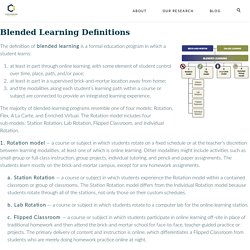

Developing as a Leader. Where to buy Kits & Components. Videos. Toroidal. Cold Reading. Interactive Web. Training Teachers to Teach Critical Thinking. How KIPP educators instruct their colleagues to enhance their classroom practice.

KIPP King Collegiate High School principal Jason Singer trains his teachers to lead Socratic discussions (above); Katie Kirkpatrick (right), dean of instruction, developed a step-by-step framework -- described below -- for teaching students basic critical-thinking skills. Credit: Zachary Fink Thinking critically is one thing, but being able to teach it can be quite another. Katie Kirkpatrick, dean of instruction at KIPP King Collegiate High School, developed the school's Speech & Composition class, a requirement for all students. In the class, students learn basic critical-thinking skills. Define what critical thinking in the classroom is. It's an approach to teaching that allows students to make sense of the content. How is your training session structured? It's a three-hour training on the frameworks that I use in my own course, which I generated from the Toulmin Model of Argumentation.
ICT in Primary Education. ICT in Primary Education. Body Language. Pedagogical Tools. What the Gifted need. Part II: Future Cyberized Education Scenarios. 153.6 Psychology of Non/Verbal Communication. Pedagogical Tools. Pedagogy. Teaching resources. What the Gifted need. Tech to Enhance Learning. Teaching & Learning. Part II: Future Cyberized Education Scenarios. Write Source - Student Models. Mentoring-resources. Teacher mentoring. CPD/mentor. Inspiration Thinking Coaching and Mentoring. Mentor Tools and Tips - Education. Systemic leadership. Scope and Sequence. Todd Nesloney. Blended-learning-report-202013.pdf. 6 Models of Blended Learning - DreamBox Learning. As school districts look for ways to give their students a personalized learning experience without expanding their budgets, blended learning can be an effective option.

This approach to schooling combines face-to-face instruction with online learning and has yielded strong results since officially being researched as an education strategy. In fact, according to a 2010 study from the U.S. Department of Education, blended learning classes produce statistically better results than their face-to-face, non-hybrid equivalents. This may be partly due to the fact that this rapidly growing model not only increases the flexibility and individualization of student learning experiences, but also allows teachers to expand the time they spend as facilitators of learning. Schools make the switch to blended learning for a variety of reasons.
Blended Learning Model Definitions. The definition of blended learning is a formal education program in which a student learns: at least in part through online learning, with some element of student control over time, place, path, and/or pace;at least in part in a supervised brick-and-mortar location away from home;and the modalities along each student’s learning path within a course or subject are connected to provide an integrated learning experience.

The majority of blended-learning programs resemble one of four models: Rotation, Flex, A La Carte, and Enriched Virtual. The Rotation model includes four sub-models: Station Rotation, Lab Rotation, Flipped Classroom, and Individual Rotation. Assessment Maker. QuestBase is a web-based, cross-platform application that provides everything you need to create and manage your assessments, tests, quizzes and exams, both on-line and printed.

Designed as a training and learning tool, QuestBase can also be used for selection tests, psychological tests, satisfaction and opinion surveys, market researches and customer feedback. As easy as 1-2-3 No software to install or configure — just create and take assessments from any computer or device (for example, a tablet or a chromebook) with an internet connection, or print them on paper automatically, even in multiple different versions and with a professional, modern and great-looking layout. Start saving time with powerful features Who can use QuestBase? Free Tools To create and Administer Quizzes. Free Tools To create and Administer Quizzes. Cool Coding Apps and Websites for Kids. Online Testing Free Quiz Maker Create the Best web-based quizzes ClassMarker.
Next Generation Science Standards. 15 education chats worth your time. BODY LANGUAGE. Body Language. Pedagogy and Leadership. Preparing teachers to teach science and mathematics with technology: Developing a technology pedagogical content knowledge. M.L.

Niess<img alt="Corresponding author contact information" src=" <img src=" alt="E-mail the corresponding author"> Department of Science and Mathematics Education, Oregon State University, Weniger 263, Corvallis, OR 97331, USA Available online 29 April 2005 Choose an option to locate/access this article: Check if you have access through your login credentials or your institution Check access Abstract Preservice teachers’ pedagogical content knowledge (PCK) development was investigated with respect to integrating technology. Keywords Pedagogical content knowledge; Preservice teacher education; Mathematics teacher preparation; Science teacher preparation; Integrating technology Figures and tables from this article: Copyright © 2005 Elsevier Ltd. Productivity Strategies. Tools for teachers. Apps for Creative Writing.
Wordpress Notes. Google Tips, Tricks & Hacks. Mobile education. My Theory on Everything (this game called life) Psychology. Leadership. Leadership skills & training.